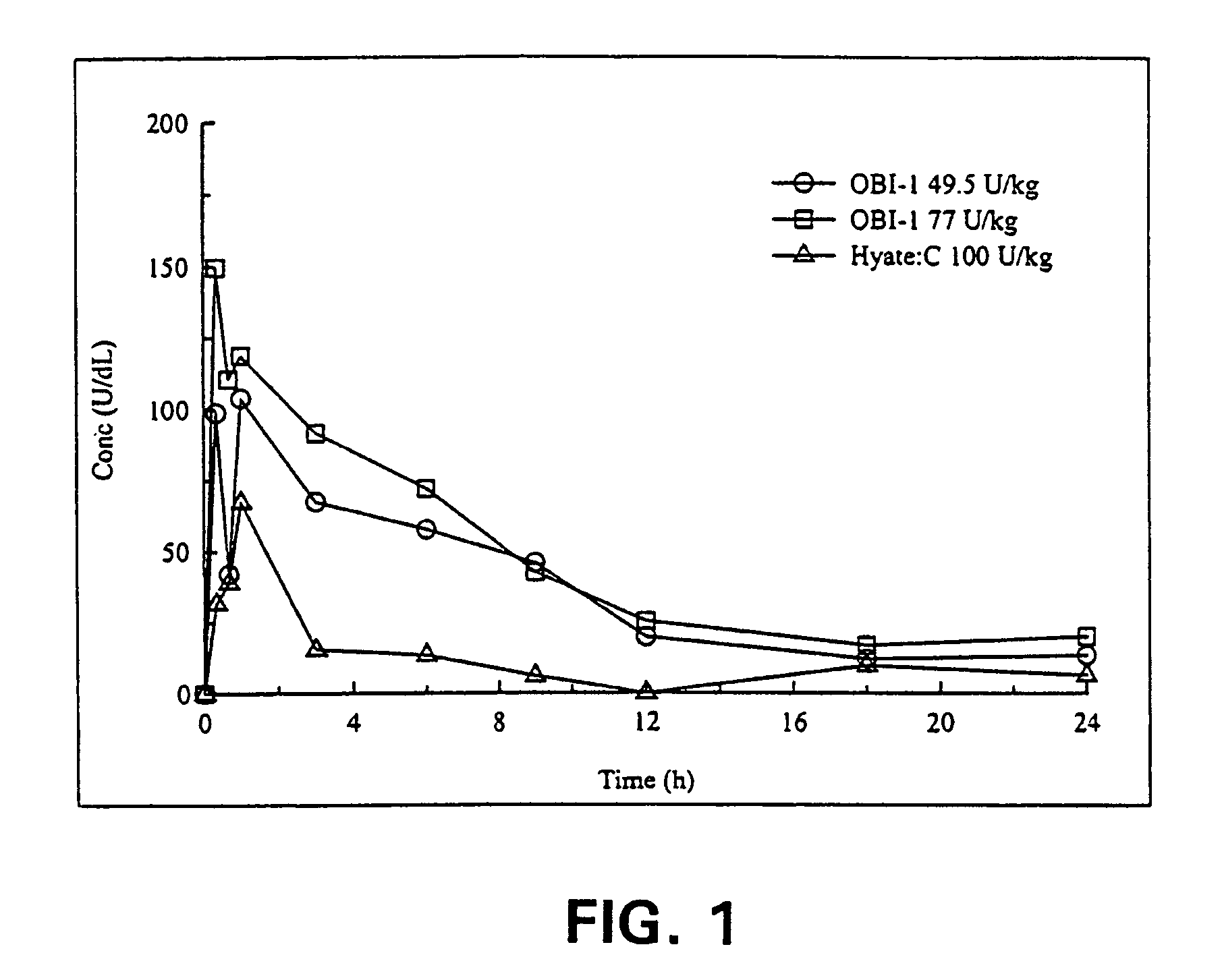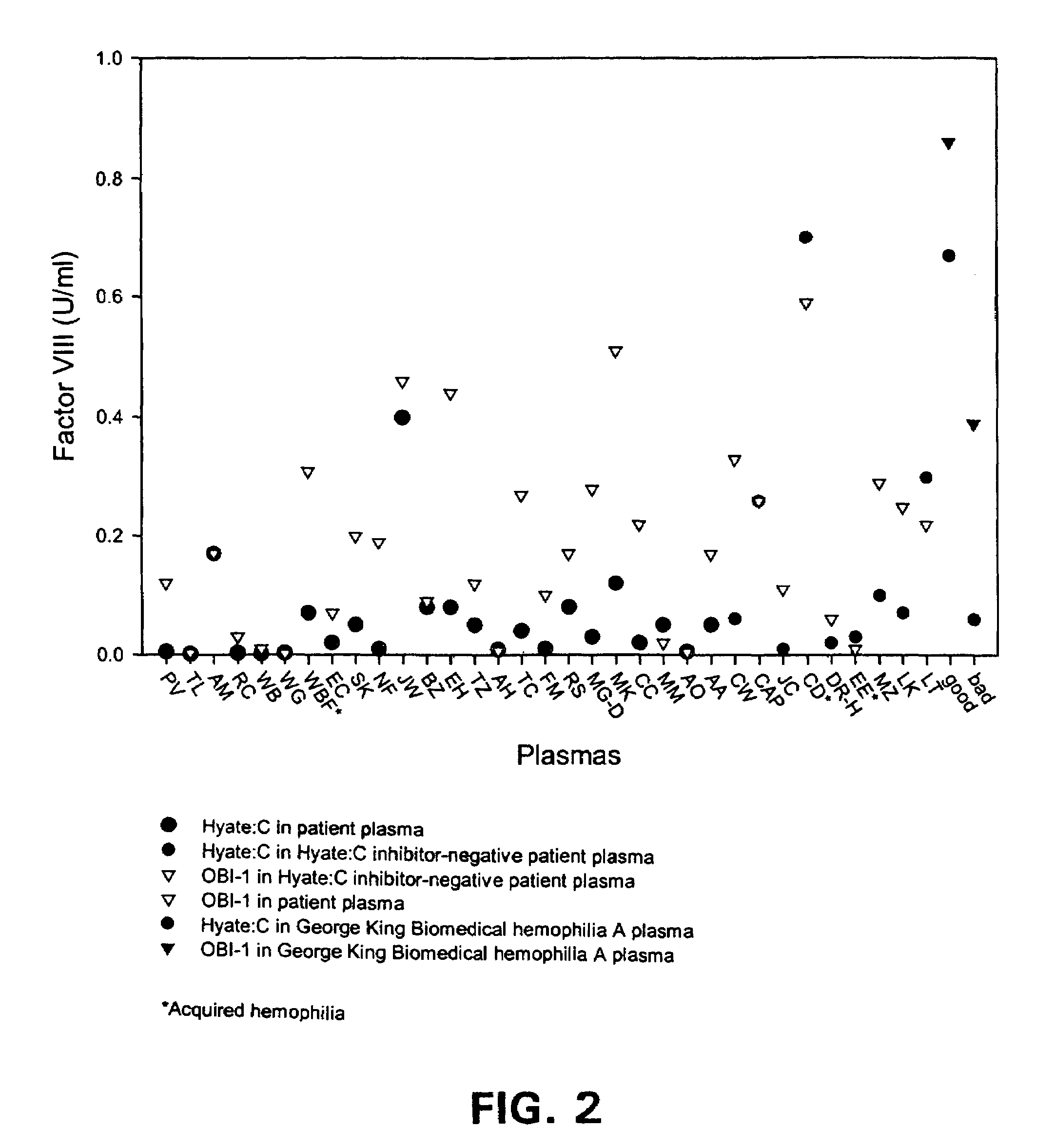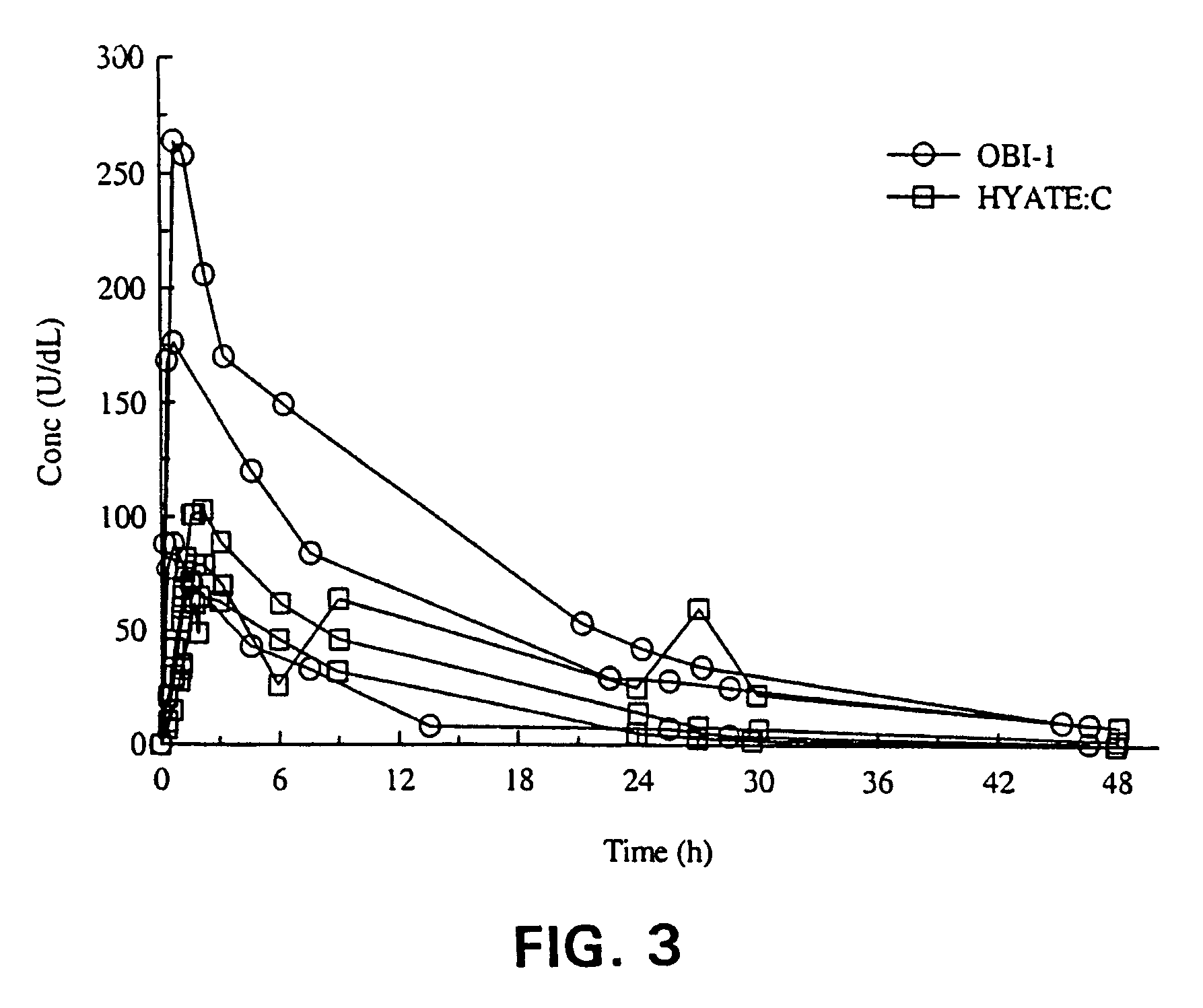Method of administering porcine B-domainless fVIII
a b-domainless, porcine technology, applied in the direction of peptide/protein ingredients, extracellular fluid disorder, inorganic non-active ingredients, etc., can solve the problems of severe limitation of patient mobility and quality of life, and achieve the effects of preventing bleeding episodes, and reducing the risk of infection
- Summary
- Abstract
- Description
- Claims
- Application Information
AI Technical Summary
Benefits of technology
Problems solved by technology
Method used
Image
Examples
example 1
Bioavailability Study in Monkeys
[0028]Non-hemophilic cynomolgus monkeys were used to compare bioavailability of OBI-1 and HYATE:C. Groups of 4 monkeys were given one intravenous dose of either HYATE:C 100 U / kg, or OBI-1 at doses of either 49 or 77 U / kg. Blood samples were drawn at specified time points thereafter, and the fVIII levels obtained were used to calculate pharmacokinetic parameters, including the activity levels integrated over time. The integrated value is referred to as area under the curve for the specified time period (AUC0→t).
[0029]Pharmacokinetic analyses were calculated using non-compartmental methods, corrected for baseline (endogenous fVIII level in the test animal). The maximum plasma concentration, Cmax, and the time to maximum plasma concentration, Tmax, were taken directly from the data. The area under the curve from time zero to the final sample (AUC0→t) was calculated using the linear trapezoidal method. The results are shown in FIG. 1.
[0030]There was a dos...
example 2
Bioavailability in Hemophilic Dogs
[0035]Originally discovered as a spontaneous mutation, dogs with hemophilia A have been maintained in a protected colony for over twenty years. The colony housed at the Queens University in Kingston, Ontario, is in its tenth generation. They have no circulating fVIII activity or protein and their phenotypic picture is analogous to severe hemophilia A in humans, with recurrent severe spontaneous soft tissue and joint bleeds and chronic joint deformities. They require frequent injections of canine-derived plasma or cryoprecipitate to control their bleeding.
[0036]Eight healthy dogs aged 6 months or greater, weighing at least 6 kg and lacking anti-porcine fVIII antibody were each administered a single intravenous dose of either HYATE:C or OBI-1. Two animals each received 3 U / kg, 25 U / kg, or 100 U / kg of each product. Blood samples were drawn at baseline and at the following time points after the injection of the products: 0.25, 0.5, 1, 2, 4, 8, 12, 24, 3...
example 3
Efficacy in Hemophilic Dogs
[0042]CBT, the time it takes for bleeding to stop after the dog's toenail cuticle is cut, is a useful measure of efficacy in hemophilia dogs. In the untreated dog with hemophilia, the cuticle usually stops bleeding in approximately 2 minutes, does not bleed for a brief time and then re-bleeds steadily for at least 12 minutes or until the lesion is cauterized. The normal CBT is defined as 5 or fewer minutes of bleeding and no need for cauterization. CBT in dogs with congenital hemophilia has been used widely as a measure of the efficacy of investigational fVIII products.
[0043]The experimental design was that described in Example 2.
Table 5 demonstrates the individual changes in the CBT results for each dog for each injection.
[0044]
TABLE 5Effect of Porcine fVIII Products on Dog Cuticle Bleeding TimesCBT after OBI-1 minutesCBT after HYATE:C minutesDosePrePostPrePostDogU / kginjectioninjectionReductioninjectioninjectionReductionBecky38.512−3.5Hamish31147810−2Zoey...
PUM
| Property | Measurement | Unit |
|---|---|---|
| time | aaaaa | aaaaa |
| time | aaaaa | aaaaa |
| time | aaaaa | aaaaa |
Abstract
Description
Claims
Application Information
 Login to View More
Login to View More - R&D
- Intellectual Property
- Life Sciences
- Materials
- Tech Scout
- Unparalleled Data Quality
- Higher Quality Content
- 60% Fewer Hallucinations
Browse by: Latest US Patents, China's latest patents, Technical Efficacy Thesaurus, Application Domain, Technology Topic, Popular Technical Reports.
© 2025 PatSnap. All rights reserved.Legal|Privacy policy|Modern Slavery Act Transparency Statement|Sitemap|About US| Contact US: help@patsnap.com



